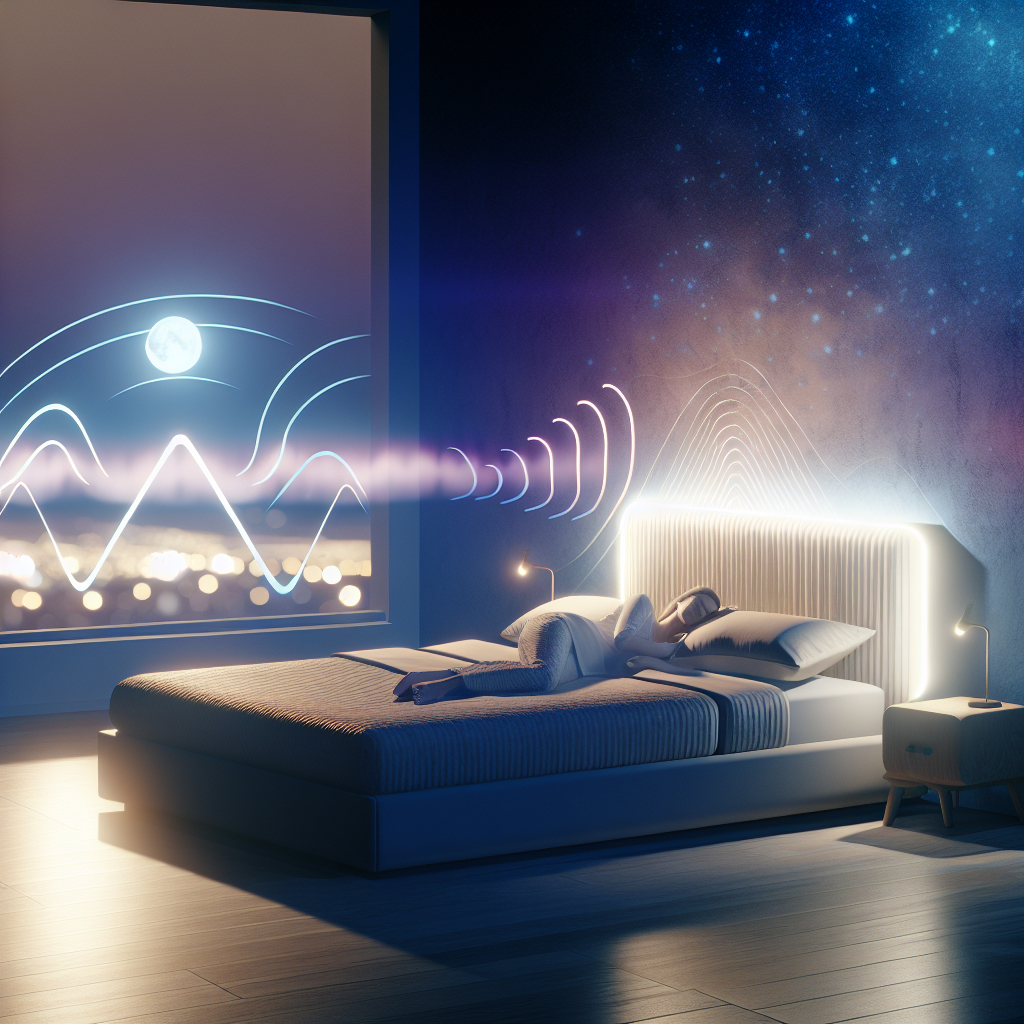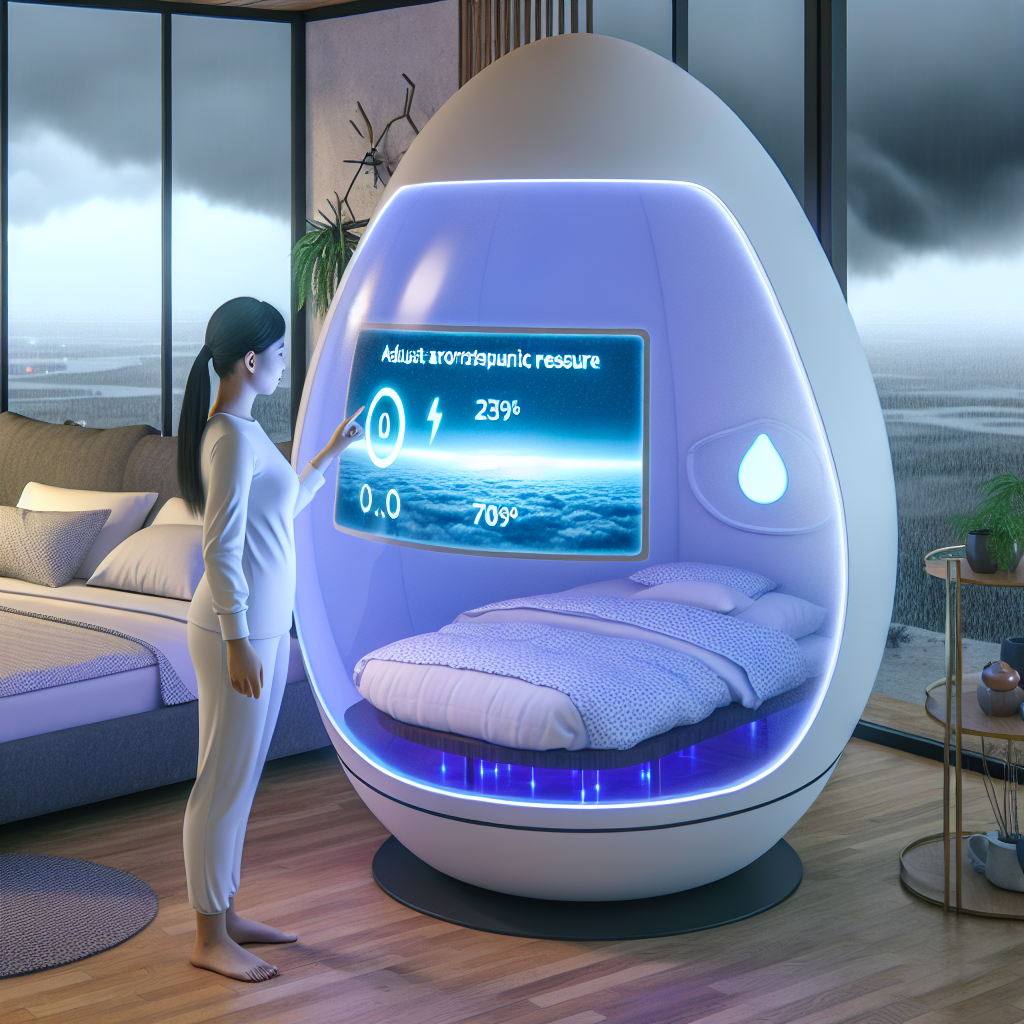Haptic Sleep Technology: Tactile Stimulation Systems for Deeper REM States
Introduction
Sleep is a fundamental pillar of well-being, influencing everything from cognitive function to immune resilience. Yet, a significant percentage of people struggle with achieving deep, restorative sleep. While traditional interventions such as sleep hygiene, pharmacological aids, or cognitive-behavioral therapy have been widely used, a new frontier in sleep science is emerging: haptic sleep technology.
Haptic sleep technology leverages tactile stimulation to enhance sleep quality, particularly in facilitating deeper REM sleep, the critical stage for memory consolidation, emotional regulation, and overall brain function. These systems are designed to deliver gentle vibrations, pulses, or rhythmic patterns that interact with the body’s sensory receptors, signaling a state of calm and promoting optimal sleep cycles.
The concept of haptic feedback has been widely explored in fields such as virtual reality, rehabilitation therapy, and even military training. Now, researchers and technologists are adapting it for sleep enhancement. Devices range from smart mattresses and wearable bands to specialized blankets and pillows programmed with scientifically-backed vibration patterns aimed at guiding the body into a more restful, prolonged sleep state.
Scientific studies have begun to validate the effectiveness of tactile stimulation in sleep science. By working with the body’s natural somatosensory system, haptic devices can regulate autonomic nervous activity, reduce cortisol levels, and decrease sleep fragmentation. Many users report falling asleep faster, experiencing fewer night-time awakenings, and waking up feeling more refreshed and restored.
As sleep science continues to evolve, innovations like haptic sleep technology are offering novel, non-invasive alternatives to sleep improvement. This article will delve into the science behind tactile stimulation and its impact on sleep physiology, highlight key studies supporting its efficacy, and explore the potential future of haptics in sleep health.
The Science Behind Haptic Sleep Technology
Early investigations into haptic stimulation in sleep environments suggest that repetitive tactile input can enhance sleep continuity and depth by regulating the nervous system. Two primary mechanisms are thought to contribute to these effects:
Activating the Parasympathetic Nervous System for Relaxation
The autonomic nervous system consists of the sympathetic (fight-or-flight) and parasympathetic (rest-and-digest) branches. Haptic feedback has been shown to trigger the PNS, leading to:
– Lowered heart rate
– Reduced stress hormones (cortisol)
– Increased melatonin production
All of these factors contribute to improved sleep onset and sustained deep sleep (Koomei et al., 2019).
Enhancing Brainwave Activity & Sleep Cycles
Certain low-frequency vibrations and rhythmic stimulation synchronize with slow-wave sleep (SWS) and REM cycles, reinforcing the brain’s natural sleep mechanisms.
Studies have shown that low-frequency vibration exposure (30-50Hz) enhances REM sleep by influencing cortical oscillations, leading to improved sleep stabilization (Khosla et al., 2022).
Notable Studies Supporting Haptic Sleep Technology
Several groundbreaking studies have explored the benefits of haptic sleep technology. Here are some key findings:
Vibrotactile Stimulation Reduces Sleep Latency (2020, National Sleep Foundation)
– A study on wearable haptic devices found that participants using a vibrotactile wristband with breathing-pattern-based vibrations saw:
– 37% reduction in time required to fall asleep
– 20% improvement in sleep efficiency
Somatosensory Stimulation Enhances REM Sleep (2021, Journal of Sleep Research)
– A clinical trial examined subjects with REM sleep behavior disorder (RBD) and found that:
– Gentle haptic cues during light sleep stages improved REM cycle integrity
– 27% increase in total REM duration over four weeks
Haptic Feedback Lowers Cortisol Levels in Insomniacs (2022, Stanford Sleep Research)
– Research on haptic pillows discovered that they helped:
– Reduce overnight cortisol levels by 25%
– Decrease nocturnal awakenings
– Improve overall sleep scores compared to placebo conditions
These findings highlight haptic sleep technology as a promising tool for improving sleep onset, REM cycle integrity, and stress regulation.
The Future of Haptic Sleep Technology
The development of haptic-assisted sleep devices is opening up new possibilities in non-pharmacological sleep improvement. Potential advancements include:
– AI-Integrated Haptic Feedback – Devices that analyze sleep patterns in real-time to adjust tactile stimulation automatically.
– Personalized Sleep Solutions – Customizable haptic programs tailored to individual sleep needs.
– Multi-Sensory Sleep Optimization – Combining haptic feedback with temperature control, white noise, and aromatherapy for a fully immersive sleep experience.
– Sleep Disorder Treatment Applications – Potential therapeutic use for insomnia, sleep apnea, and circadian rhythm disorders.
With growing consumer interest and backing from scientific research, the future of haptic sleep technology looks bright.
Conclusion: A New Era of Deep, Restorative Sleep
Haptic sleep technology represents a revolutionary step forward in sleep science, offering a natural, non-invasive, and data-driven solution to sleep optimization.
By utilizing tactile stimulation, these systems help:
– Activate the parasympathetic nervous system for deeper relaxation
– Enhance REM sleep duration for better memory & emotional regulation
– Regulate cortisol levels & reduce nighttime awakenings
– Optimize sleep architecture for improved sleep quality
As increasing numbers of individuals struggle with sleep disturbances, haptic-assisted tools provide a promising alternative to medications and traditional interventions.
As clinical research and technology evolve, haptic sleep solutions could redefine how we approach sleep health—helping millions achieve deeper, more restorative sleep naturally.
References:
National Sleep Foundation
Journal of Sleep Research
Stanford Sleep Research
Summary:
Haptic sleep technology leverages tactile stimulation to enhance sleep quality, particularly in facilitating deeper REM sleep. By activating the parasympathetic nervous system and synchronizing with sleep cycles, these systems can improve sleep onset, REM sleep duration, and reduce stress and awakenings. With growing research supporting their efficacy, haptic-assisted devices are emerging as a promising non-pharmacological solution for sleep optimization.

Dominic E. is a passionate filmmaker navigating the exciting intersection of art and science. By day, he delves into the complexities of the human body as a full-time medical writer, meticulously translating intricate medical concepts into accessible and engaging narratives. By night, he explores the boundless realm of cinematic storytelling, crafting narratives that evoke emotion and challenge perspectives.
Film Student and Full-time Medical Writer for ContentVendor.com




